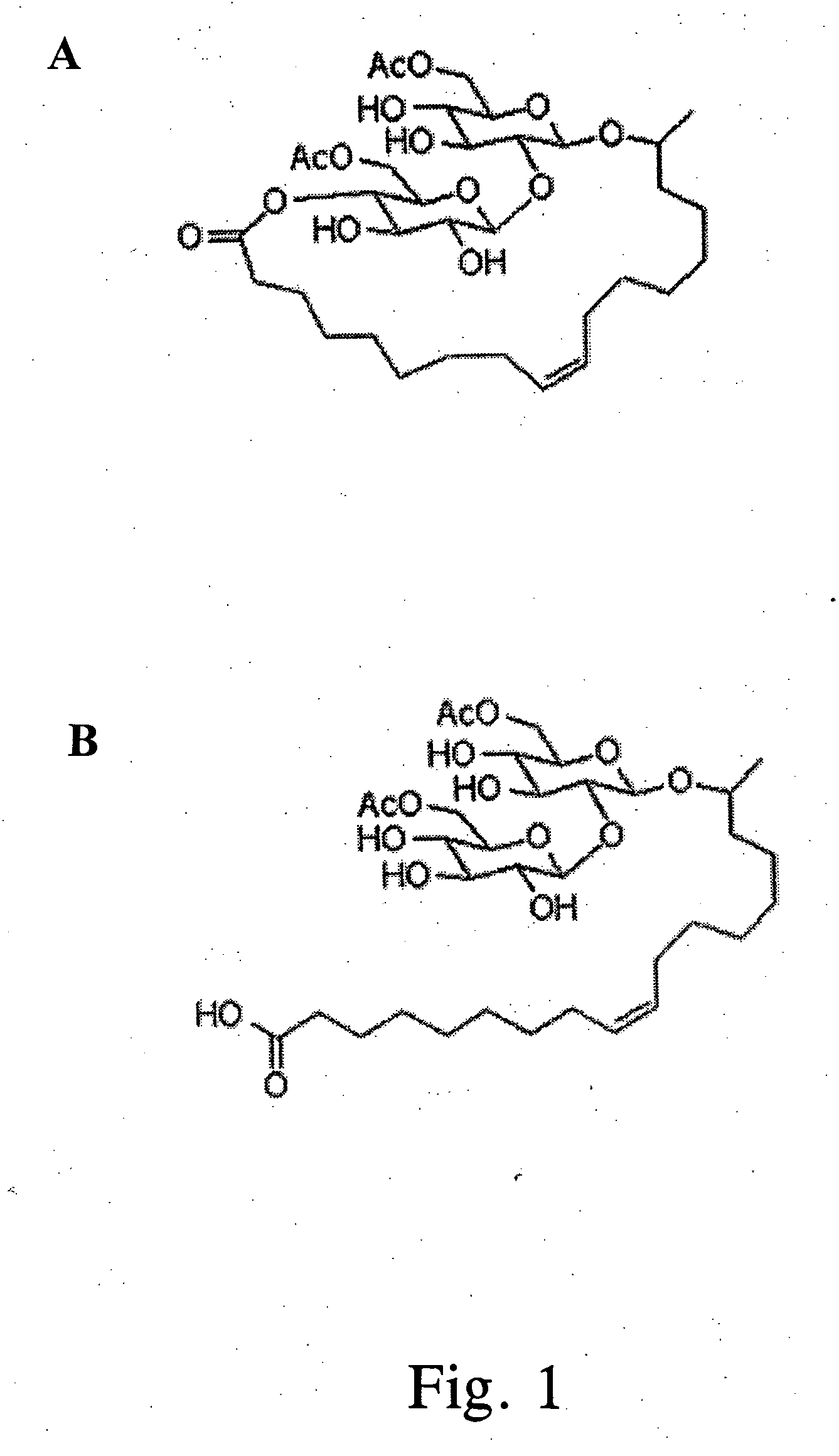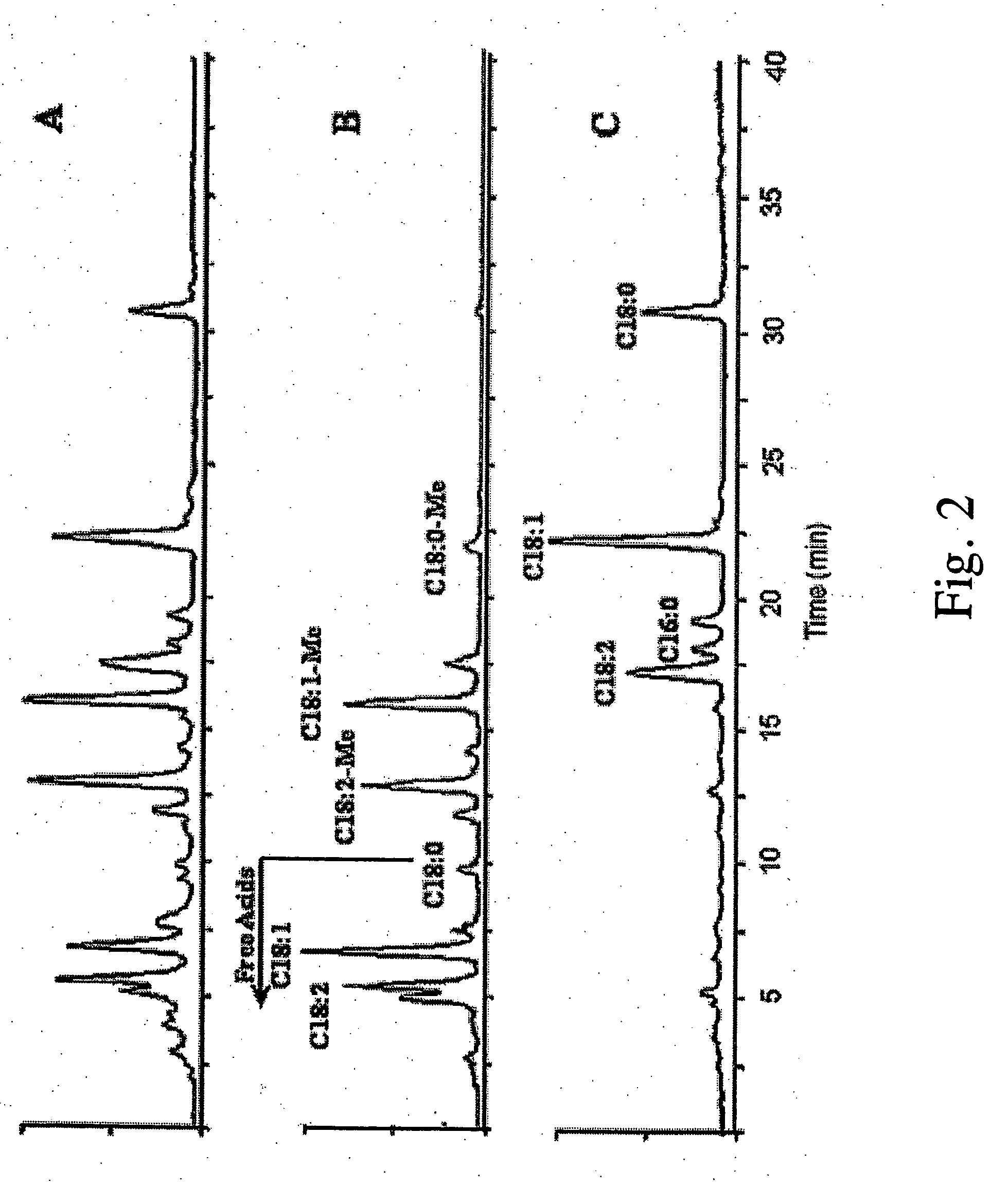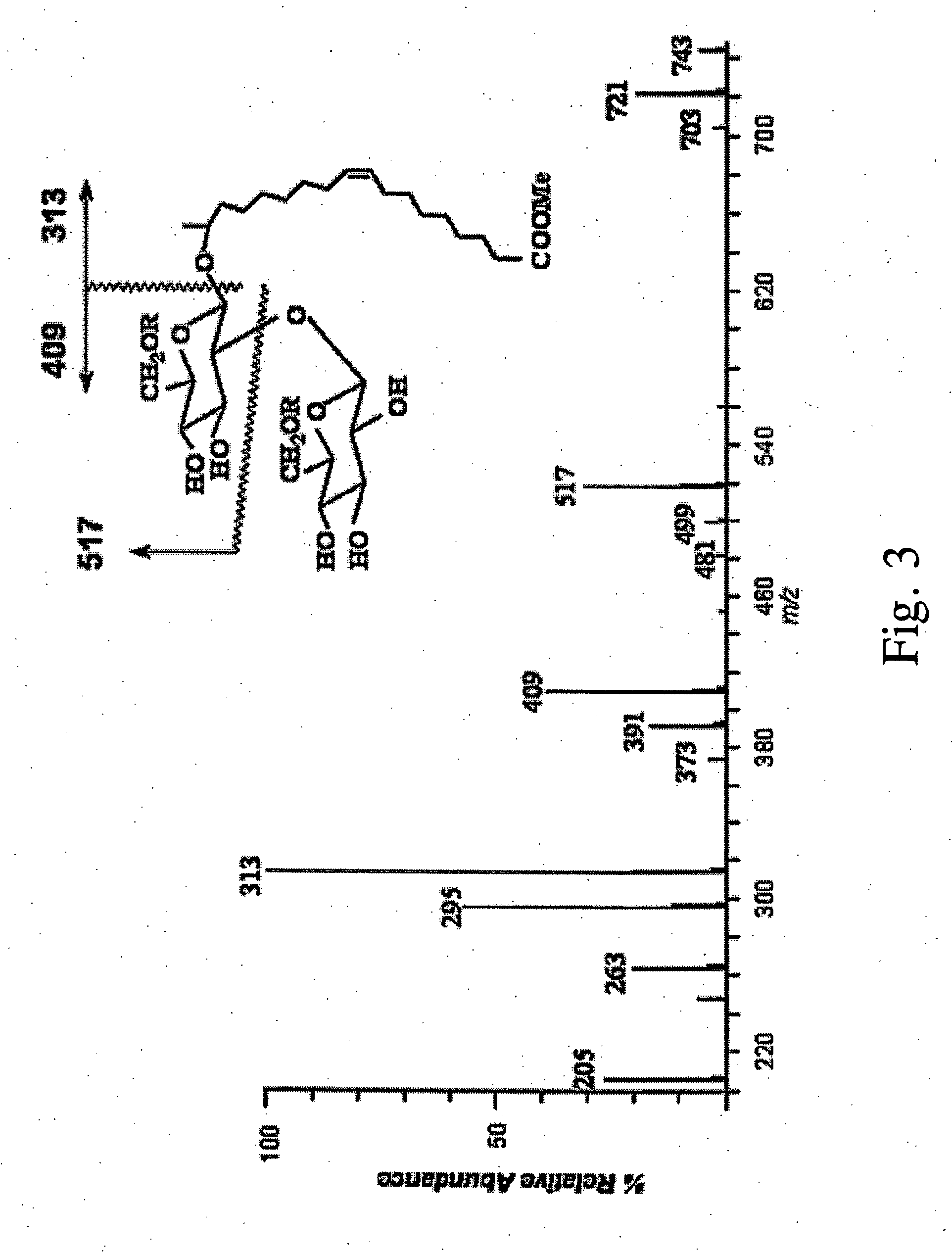Production of open-chained sophorolipids
a sophorolipid and open-chain technology, applied in the field of open-chained sophorolipid production, can solve the problems of glut in the glycerol market, deacetylation of sophorose sugar, and additional cost to the alteration of the fatty acid side-chain
- Summary
- Abstract
- Description
- Claims
- Application Information
AI Technical Summary
Problems solved by technology
Method used
Image
Examples
example 1
[0031] Strain information and inoculum preparation: Candida bombicola ATCC 22214 was obtained from American Type Culture Collection (Manassas, Va.). The inocula for all of the SL production cultures were prepared in Candida Growth Media (CGM) which contained glucose (10% w / v), yeast extract (1% w / v), and urea (0.1% w / v) (Asmer, H-J., et al., J. Am, Oil Chem. Soc., 65: 1460-1466 (1988)), and were grown at 26° C. with shaking at 250 rpm. Frozen stock cultures were prepared by inoculating 100-mL of CGM (contained in a 250-mL Erlenmeyer flask) with a loopful of C. bombicola and grown for 24 h. Ten mL of this culture was then inoculated into 500-mL of CGM in a 1-L Erlenmeyer flask and the culture allowed to grow for an additional 48 h. The culture was then divided into 200 mL volumes and the cells were aseptically collected by centrifugation (16,000×g; 10 min; 4° C.). Fifty mL of a sterile aqueous glycerol solution (10% v / v) was then used to resuspend each cell pellet and the cell suspen...
example 2
Transesterification of Soy Oil
[0043] Methyl-, ethyl- and propyl-soyates were prepared by alkali-catalyzed transesterification (Freedman, B., et al., J. Am. Oil Chem. Soc., 61: 1638-1643 (1984)) using a 6:1 molar ratio of alcohol to soy oil (Sigma Chemical Co.). The fatty ester profile of the soy oil used in this study was as follows: palmitic acid, 11%, stearic acid, 3%, oleic acid, 21%, linoleic acid, 57%, and linolenic acid, 8%. Specifically, assuming an average molecular weight of 872 amu for soy triacylglycerol, 436 g of soy oil was added to each of 3 separate 1-L finned Erlenmeyer flasks and 96 g of methanol, 138 g of ethanol and 180 g of propanol were added to the flasks, respectively. Dry NaOH pellets (4.36 g / flask) were added to each flask to induce alkaline conditions and each flask was capped to inhibit alcohol evaporation and stirred briskly overnight (the propanol-containing flask was heated at 85° C. for the duration of the reaction to help dissolve the NaOH pellets). ...
PUM
| Property | Measurement | Unit |
|---|---|---|
| temperature | aaaaa | aaaaa |
| volumes | aaaaa | aaaaa |
| volumes | aaaaa | aaaaa |
Abstract
Description
Claims
Application Information
 Login to View More
Login to View More - R&D
- Intellectual Property
- Life Sciences
- Materials
- Tech Scout
- Unparalleled Data Quality
- Higher Quality Content
- 60% Fewer Hallucinations
Browse by: Latest US Patents, China's latest patents, Technical Efficacy Thesaurus, Application Domain, Technology Topic, Popular Technical Reports.
© 2025 PatSnap. All rights reserved.Legal|Privacy policy|Modern Slavery Act Transparency Statement|Sitemap|About US| Contact US: help@patsnap.com



